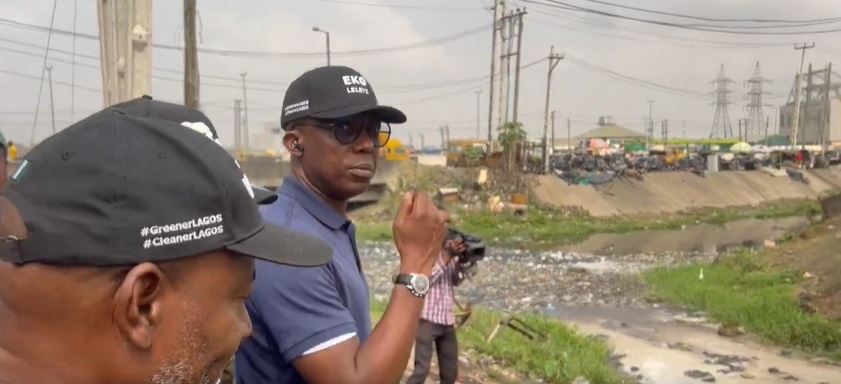The Lagos State Government on Thursday removed illegal structures obstructing the Jebba/Kano collector in Ebute Metta, a move aimed at improving stormwater flow and reducing flooding risks.
The disclosure was made by the Lagos State Commissioner for Environment and Water Resources, Tokunbo Wahab, via his official X account.
Accompanying the post was video footage showing the enforcement team removing the structures by breaking down concrete blocks and cutting through metal protectors, all of which were blocking the collector and impeding proper drainage.
“Our enforcement team conducted the removal of illegal structures built along the Jebba/Kano collector, Ebute Metta. These encroachments have obstructed the free flow of stormwater and contributed to flooding in the axis,” the statement read.
Wahab urged residents to respect the drainage right of way and avoid erecting buildings or extensions that could obstruct public infrastructure, stressing that protecting drains is crucial to safeguarding lives and property.
What you should know
The removal of structures along the Jebba/Kano collector follows similar enforcement actions across Lagos. Recently, the government demolished illegal buildings along the setback of the Ikota River in Lekki.
- The government said these structures had been erected on the river’s right-of-way, blocking natural water channels and worsening flash flooding, particularly along the Lekki–Ajah corridor. Affected structures fell within the alignment of the Ikota River, including systems 156, 157, 44, 44A, and 46.
- Beyond tackling illegal structures on river and drainage paths, the Lagos State Government has outlined a broader strategy to enhance the city’s flood resilience. Over the next 24 months, plans include the creation of the Lekki Blue-Green Network, which will link estate lakes, canals, and green corridors to store and gradually release water.
- The government also plans to install flap gates and pilot pumps at tide-sensitive outfalls while intensifying enforcement of canal rights-of-way, expanding on ongoing restoration efforts.
- Between 2023 and 2025, the state has maintained 579 kilometres of secondary collectors across 693 sites, alongside 309 kilometres of primary channels. Rapid-response teams have cleared 444 kilometres of drains, restored 40.3 kilometres of encroached channels, and awarded contracts for 218 new channels, which will add roughly 1,500 kilometres to the drainage network once completed.
Immediate measures are also in progress, including clearing silt and debris at choke points, installing debris screens on culverts, and piloting estate lakes and detention systems to temporarily store excess water.
Looking further ahead, within the next two to eight years, the government intends to introduce pumped drainage cells in low-lying areas, complete secondary-drain planning, secure drainage easements, and restore critical wetlands. Building codes will also be updated to ensure new developments incorporate on-site water retention measures.







